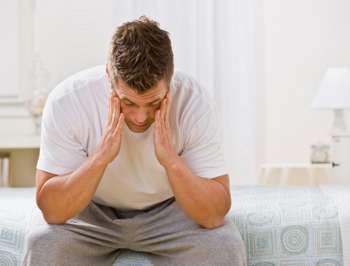Gay Loneliness

HighLine – The Huffington Post 2 March 2017
Family First Comment: This is a fascinating read – by a gay man.
The argument pushed by the media and political elite is that all the adversity and negative social statistics and health issues that gays face is due to ‘homophobia’. But this article contradicts that completely.
“…even as we celebrate the scale and speed of this change, the rates of depression, loneliness and substance abuse in the gay community remain stuck in the same place they’ve been for decades… In the Netherlands, where gay marriage has been legal since 2001, gay men remain three times more likely to suffer from a mood disorder than straight men, and 10 times more likely to engage in “suicidal self-harm.” In Sweden, which has had civil unions since 1995 and full marriage since 2009, men married to men have triple the suicide rate of men married to women.”
Jeremy is not my only gay friend who’s struggling. There’s Malcolm, who barely leaves the house except for work because his anxiety is so bad. There’s Jared, whose depression and body dysmorphia have steadily shrunk his social life down to me, the gym and Internet hookups. And there was Christian, the second guy I ever kissed, who killed himself at 32, two weeks after his boyfriend broke up with him. Christian went to a party store, rented a helium tank, started inhaling it, then texted his ex and told him to come over, to make sure he’d find the body.
1.That’s not his real name. Only a few of the names of the gay men in this article are real.
For years I’ve noticed the divergence between my straight friends and my gay friends. While one half of my social circle has disappeared into relationships, kids and suburbs, the other has struggled through isolation and anxiety, hard drugs and risky sex.
None of this fits the narrative I have been told, the one I have told myself. Like me, Jeremy did not grow up bullied by his peers or rejected by his family. He can’t remember ever being called a faggot. He was raised in a West Coast suburb by a lesbian mom. “She came out to me when I was 12,” he says. “And told me two sentences later that she knew I was gay. I barely knew at that point.”
Jeremy and I are 34. In our lifetime, the gay community has made more progress on legal and social acceptance than any other demographic group in history. As recently as my own adolescence, gay marriage was a distant aspiration, something newspapers still put in scare quotes. Now, it’s been enshrined in law by the Supreme Court. Public support for gay marriage has climbed from 27 percent in 1996 to 61 percent in 2016. In pop culture, we’ve gone from “Cruising” to “Queer Eye” to “Moonlight.” Gay characters these days are so commonplace they’re even allowed to have flaws.
Still, even as we celebrate the scale and speed of this change, the rates of depression, loneliness and substance abuse in the gay community remain stuck in the same place they’ve been for decades. Gay people are now, depending on the study, between 2 and 10 times more likely than straight people to take their own lives. We’re twice as likely to have a major depressive episode. And just like the last epidemic we lived through, the trauma appears to be concentrated among men. In a survey of gay men who recently arrived in New York City, three-quarters suffered from anxiety or depression, abused drugs or alcohol or were having risky sex—or some combination of the three. Despite all the talk of our “chosen families,” gay men have fewer close friends than straight people or gay women. In a survey of care-providers at HIV clinics, one respondent told researchers: “It’s not a question of them not knowing how to save their lives. It’s a question of them knowing if their lives are worth saving.”
I’m not going to pretend to be objective about any of this. I’m a perpetually single gay guy who was raised in a bright blue city by PFLAG parents. I’ve never known anyone who died of AIDS, I’ve never experienced direct discrimination and I came out of the closet into a world where marriage, a picket fence and a golden retriever were not just feasible, but expected. I’ve also been in and out of therapy more times than I’ve downloaded and deleted Grindr.
“Marriage equality and the changes in legal status were an improvement for some gay men,” says Christopher Stults, a researcher at New York University who studies the differences in mental health between gay and straight men. “But for a lot of other people, it was a letdown. Like, we have this legal status, and yet there’s still something unfulfilled.”
This feeling of emptiness, it turns out, is not just an American phenomenon. In the Netherlands, where gay marriage has been legal since 2001, gay men remain three times more likely to suffer from a mood disorder than straight men, and 10 times more likely to engage in “suicidal self-harm.” In Sweden, which has had civil unions since 1995 and full marriage since 2009, men married to men have triple the suicide rate of men married to women.
All of these unbearable statistics lead to the same conclusion: It is still dangerously alienating to go through life as a man attracted to other men. The good news, though, is that epidemiologists and social scientists are closer than ever to understanding all the reasons why.
READ MORE: http://highline.huffingtonpost.com/articles/en/gay-loneliness/






